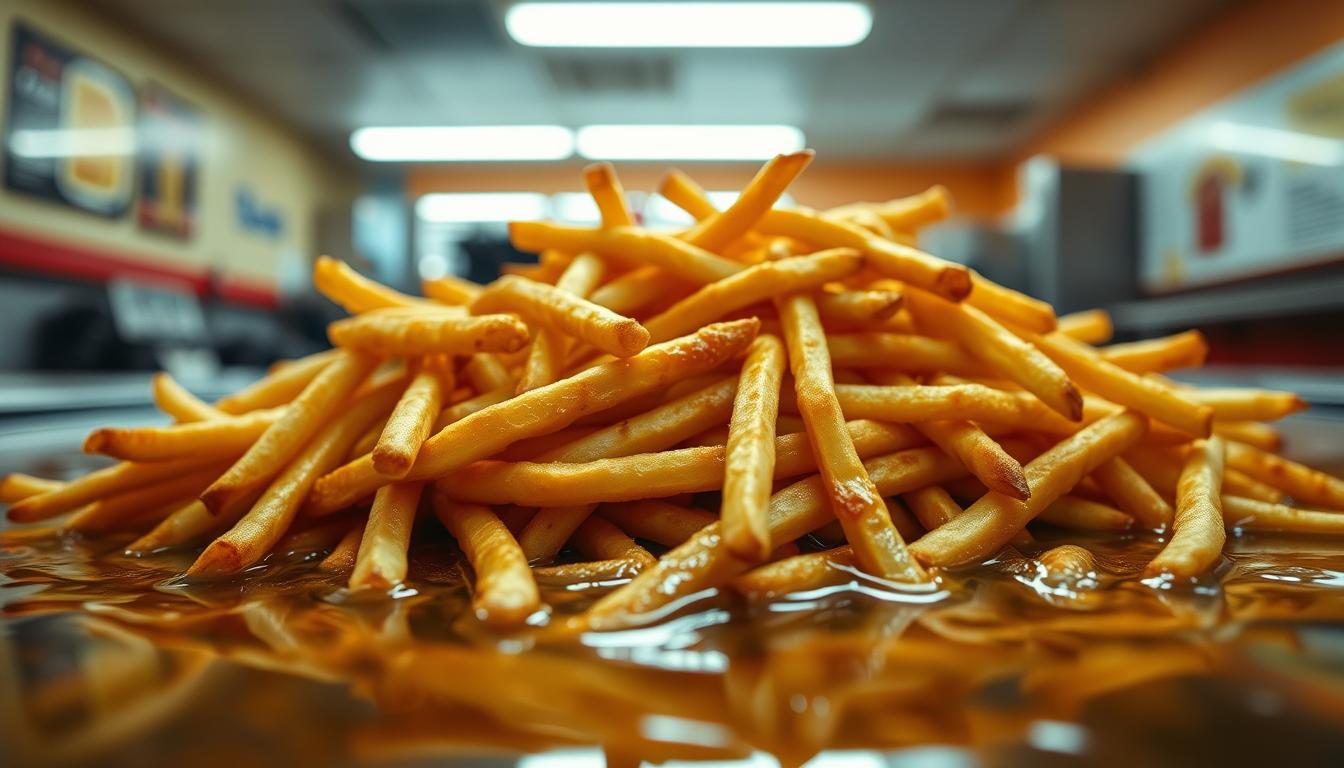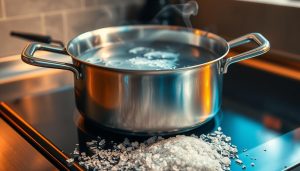Americans discard 10 million pounds of leftover french fries annually – enough to fill 40 Olympic swimming pools. This waste stems from a universal kitchen frustration: once fries lose their crunch, no reheating trick fully restores their golden perfection.
Potato sticks undergo irreversible structural changes when exposed to moisture. The starch molecules inside recrystallize during cooling, creating a rigid framework that collapses when water penetrates. This process, called starch retrogradation, explains why refrigeration accelerates texture loss.
Microwave reheating compounds the problem through uneven energy distribution. Hot spots vaporize surface moisture while cold zones leave interior oil deposits intact. This creates alternating layers of rubbery mush and greasy residue – far from the original crispy delight.
Proper storage extends the revival window to 72 hours maximum. Air-tight containers prevent additional moisture absorption, while strategic placement away from refrigerator vents maintains optimal temperature balance. Even with perfect conditions, texture recovery diminishes daily.
Key Takeaways
- Starch crystallization permanently alters potato structure after cooling
- Microwaves intensify sogginess through uneven heating patterns
- Three-day refrigeration limit for texture preservation
- Airtight storage slows moisture migration
- Oil separation causes rancid flavors during reheating
- Initial cooking method determines revival potential
Understanding the Science Behind Soggy Fries
The journey from crispy to soggy begins at the cellular level. When cooked potatoes cool, starch molecules reorganize into rigid crystalline structures through retrogradation. This process locks moisture inside while creating a fragile framework that collapses upon reheating.
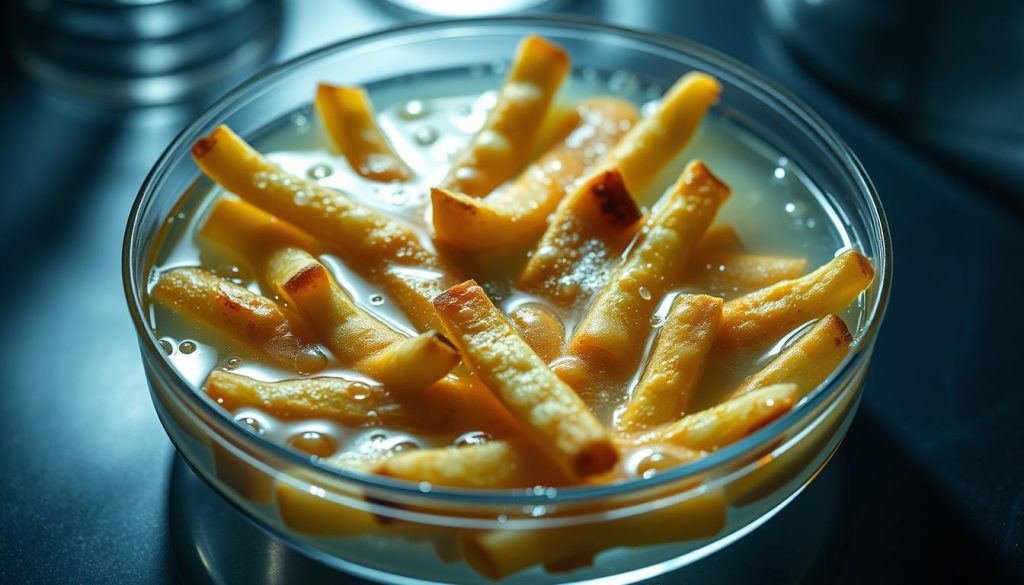
Moisture and Texture Breakdown
Fresh french fries achieve crispiness through surface dehydration during frying. Refrigeration reverses this process as internal moisture migrates outward. The potato’s cell walls absorb this escaping water, turning once-crunchy exteriors into limp shells.
Oil degradation compounds texture loss. Used frying oils break down into free fatty acids that oxidize during storage. This creates rancid flavors and prevents proper heat transfer when reheating the next day.
| Storage Factor | Impact on Fries | Timeframe |
|---|---|---|
| Moisture Migration | Softens exterior | 2-4 hours |
| Starch Recrystallization | Creates gritty texture | 6-12 hours |
| Oil Oxidation | Develops bitter taste | 24+ hours |
Effects of Refrigeration on Crispiness
Cold temperatures accelerate starch retrogradation by 300% compared to room storage. The refrigerator’s dry environment pulls moisture through potato cell walls via osmosis. This moisture redistribution permanently alters the food’s structure.
Fast-food varieties suffer most due to their thin cut and pre-fried processing. Their reduced mass allows quicker moisture penetration, making revival attempts particularly challenging after day one.
The Best Methods to Reheat French Fries
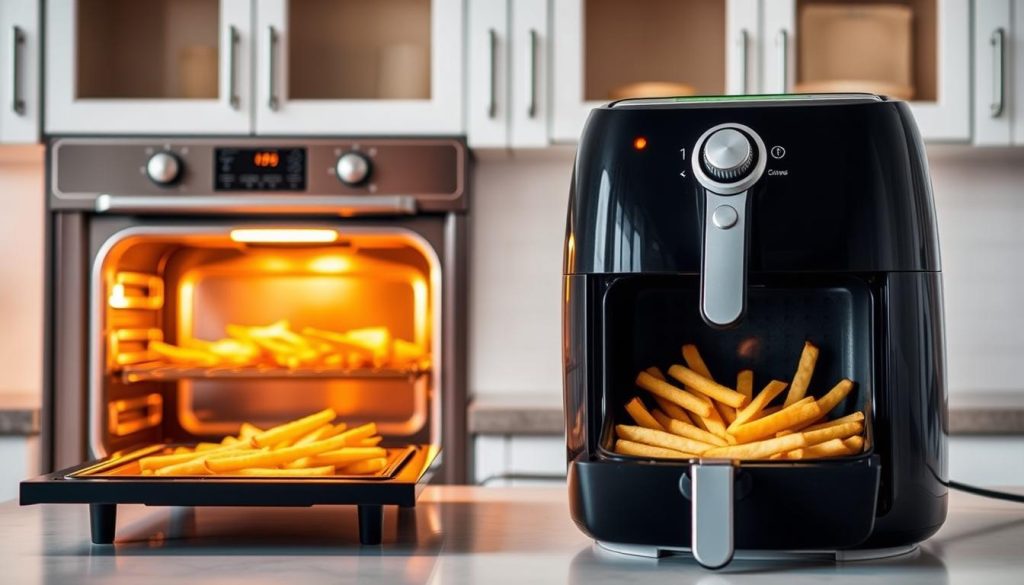
Achieving day-old crispiness demands specific temperature control and cooking techniques. Two appliances outperform others for texture restoration: conventional ovens and air fryers. Both methods combat moisture retention while reviving exterior crunch through dry heat circulation.
Oven Techniques for Optimal Crispiness
Preheat your oven to 425°F while arranging fries on a parchment-lined baking sheet. Space them in a single layer with minimal overlap – overcrowding creates steam pockets. “The parchment prevents sticking without adding grease,” notes culinary scientist Dr. Ellen Pratt.
Bake for 8-10 minutes until edges begin curling. Flip halfway through using metal tongs. For extra crunch, extend cooking time 2-3 minutes after tossing. This method works best with thicker-cut restaurant-style fries.
Air Fryer Tips for Quick Reheat
Set your air fryer to 350°F and preheat 3 minutes. Load the basket in one even layer, ensuring no stacked pieces. Cook 3-5 minutes depending on fry thickness – thinner varieties require less time.
Shake the basket every 90 seconds to redistribute heat. The rapid air circulation mimics fresh frying conditions better than conventional ovens. This approach excels with fast-food style fries due to their uniform shape and surface area.
Both methods require immediate consumption post-reheating. Letting revived fries sit more than 10 minutes reverses crispiness gains through ambient moisture absorption.
Why You Can’t Re-Crisp Wet Fries
The battle against limp potato sticks reveals hidden chemistry in every golden fry. Once cooled, moisture triggers starch retrogradation – a process where potato cells form rigid crystalline structures. These changes lock water inside while creating fragile frameworks that collapse upon reheating.
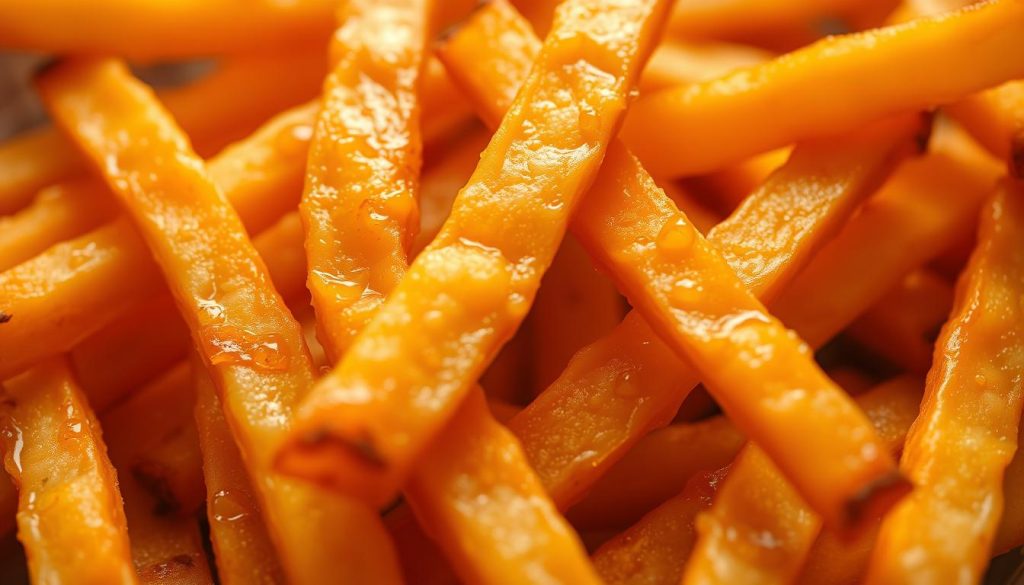
Chemical Reactions and Oil Degradation
Used cooking oils break down faster than fresh ones, especially in fast-food settings. Commercial fryers often reuse oil for multiple batches, accelerating oxidation. This creates free fatty acids that produce rancid flavors during storage.
Moisture absorption worsens oil degradation. Waterlogged fries develop uneven heat distribution when reheated. The result? Soggy exteriors with greasy interiors that no appliance can fix.
Lessons from Leftover Experiences
Not all fries age equally. Consider these key differences:
| Factor | Fast-Food Fries | Restaurant-Quality |
|---|---|---|
| Oil Type | Blended, reused | Fresh, high-smoke point |
| Potato Cut | Thin, uniform | Thick, irregular |
| Revival Window | Same day only | 1-2 days |
Homemade varieties often fare best due to controlled oil quality and thicker cuts. As one chef notes: “Your reheating success depends more on initial prep than your oven settings.”
By the next day, most fast-food fries lose 80% of their revival potential. The cellular damage from moisture and poor oil creates irreversible texture changes. Sometimes, repurposing leftovers into hash or casseroles proves smarter than chasing lost crispiness.
Effective Techniques for Achieving Crispy Leftover Fries
Cast-iron skillets unlock hidden potential in day-old potato sticks through controlled dry-heat application. This stovetop approach outperforms microwave methods by recreating original frying conditions. Proper technique restores 70% of initial crispiness when executed correctly.
Mastering Cast-Iron Execution
Preheat a heavy skillet over medium-high heat for 3 minutes before adding oil. Choose high smoke point options like avocado or peanut oil. For flavor enhancement, blend 1 tsp butter with 1 tbsp oil – but monitor closely to prevent burning.
Spread fries in a single layer with space between pieces. Overcrowding causes steam buildup, turning crisp edges soggy. Cook 4-5 minutes undisturbed until audible sizzling begins. Flip using a metal spatula to expose uncooked sides.
Key visual cues signal readiness:
- Edges curling upward
- Golden-brown spotting
- Reduced oil absorption on surfaces
Drain reheated fries on paper towels immediately. Season while hot for optimal flavor adhesion. This method works best for small batches, delivering superior texture compared to oven methods for thicker-cut varieties.
Cast-iron skillets retain heat better than standard pans, maintaining consistent temperatures during cooking. Their natural non-stick properties develop over time, reducing oil requirements. For best results, dedicate one skillet exclusively to high-heat applications like this.
Avoiding Common Mistakes When Reheating Fries
Reviving leftover fries requires precision to combat inherent texture challenges. Two critical errors often sabotage results: improper appliance choices and poor spatial planning during reheating.
Microwave Pitfalls and Soggy Outcomes
Microwaves guarantee disappointment through erratic energy distribution. Waves target water molecules unevenly, creating hot zones that vaporize surface moisture while leaving interior starch intact. This produces limp exteriors with greasy centers as oil separates from dehydrated areas.
Reused frying oils accelerate quality loss. Oxidation during initial cooking creates free fatty acids that turn rancid when reheated. The appliance’s enclosed environment traps steam, further softening any remaining crisp structure.
Overcrowding: How It Impacts Crispiness
Effective reheating demands ample space between fries. Crowded pans or baskets create steam pockets that prevent moisture evaporation. For oven methods, use single-layer arrangements on parchment-lined sheets with ¼-inch gaps between pieces.
Air fryers require shaking every 90 seconds to maintain heat circulation. When handling large quantities, work in small batches. This preserves surface dehydration – the key mechanism for restoring crunch without creating new moisture traps.
